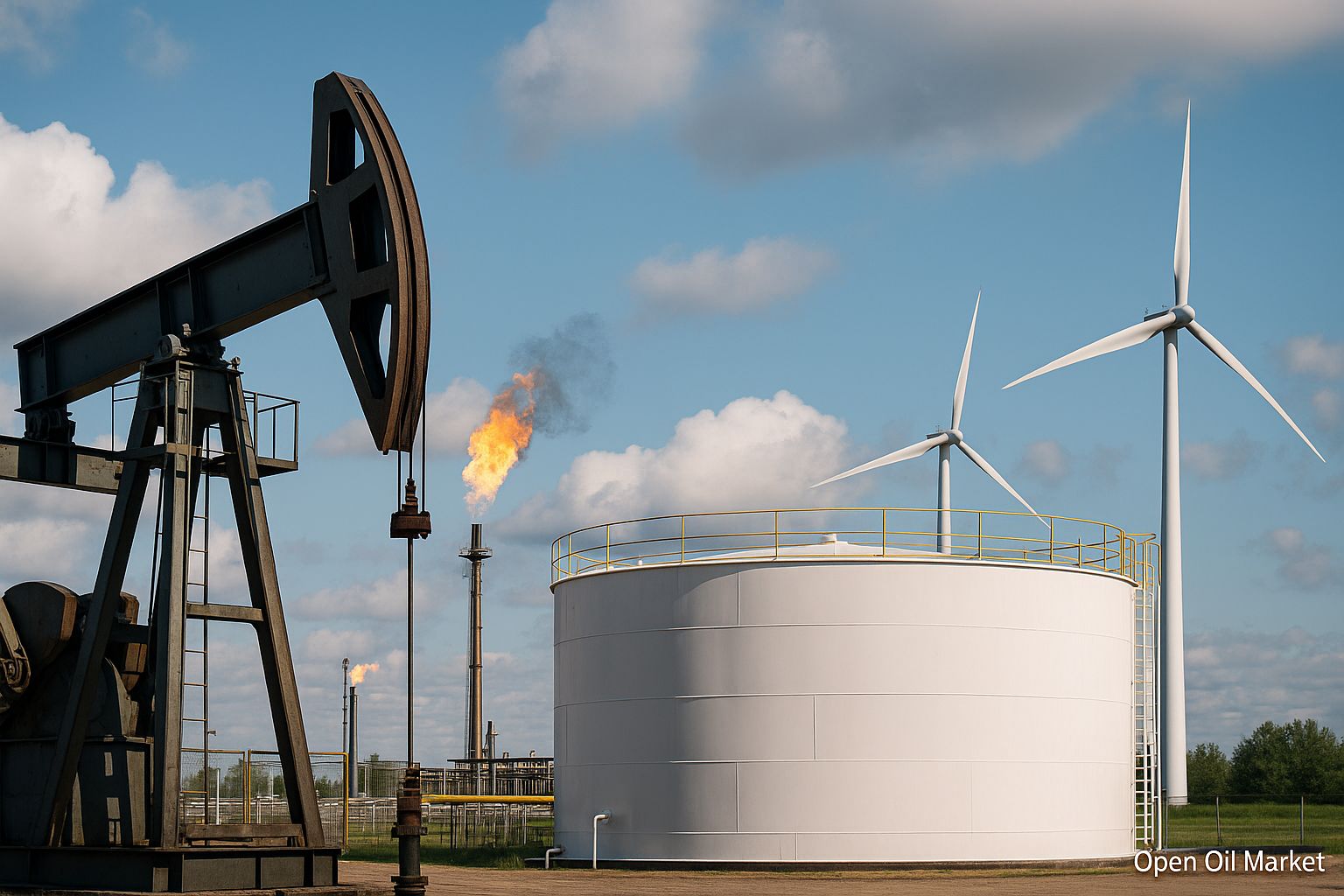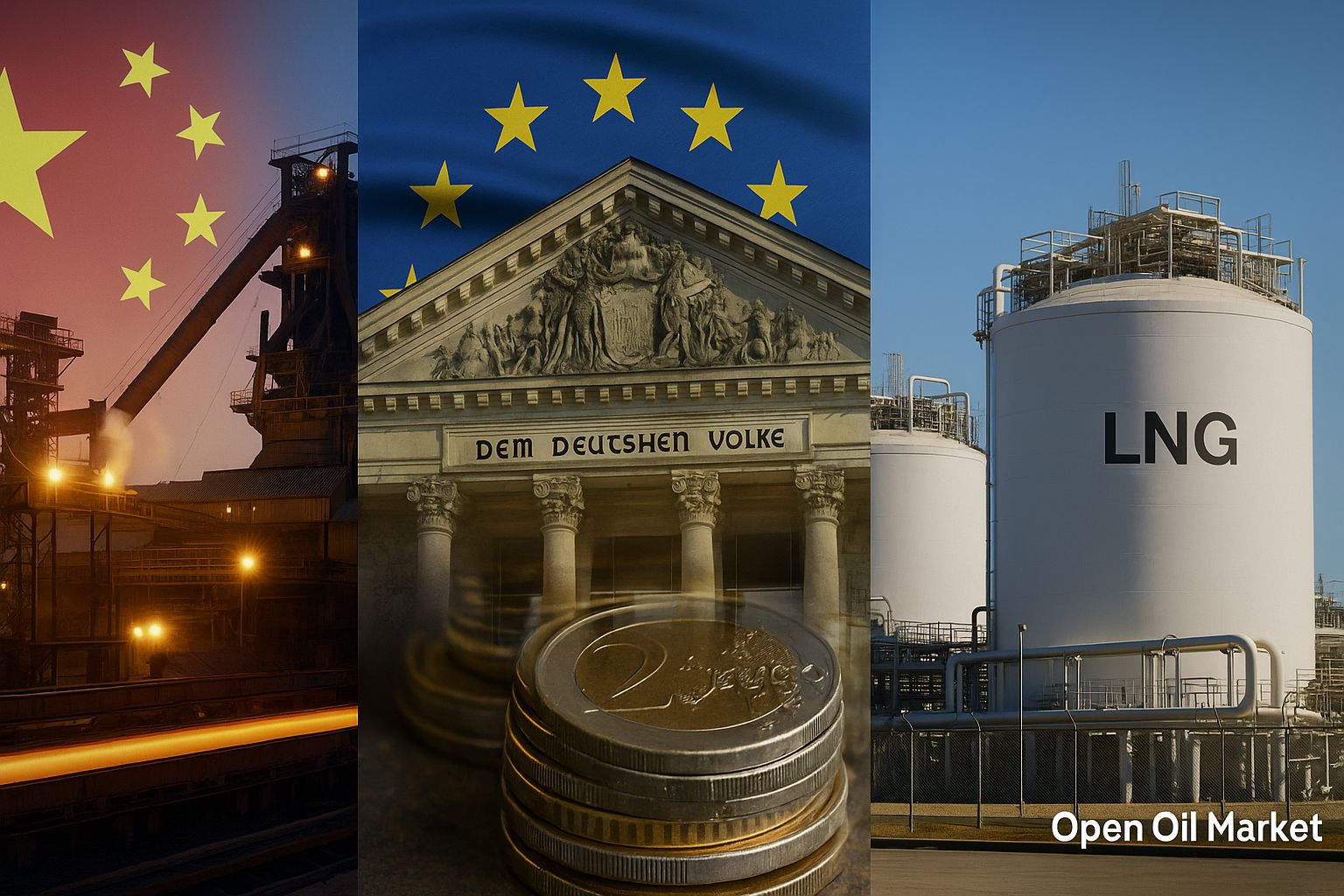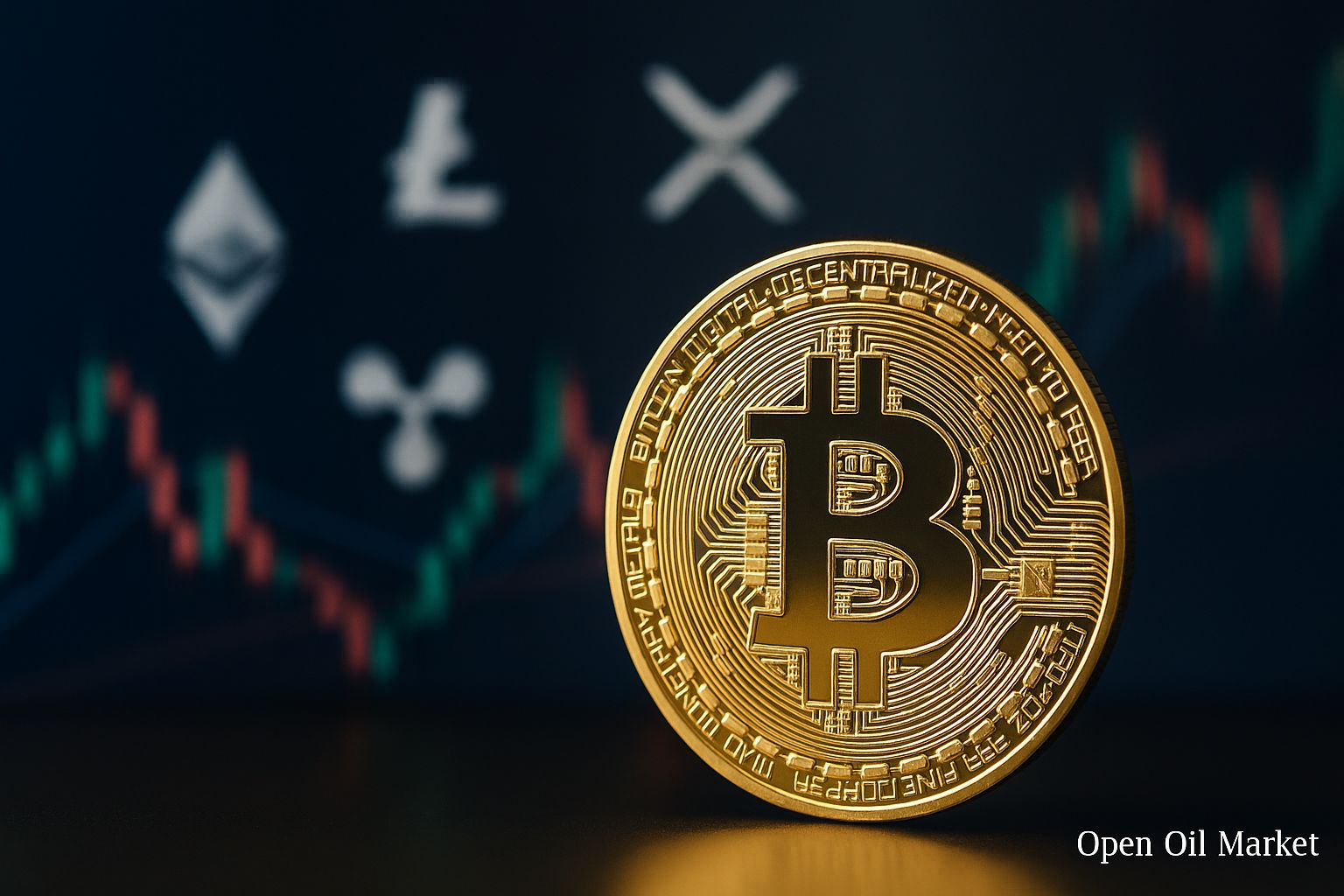
Main Energy Sector News as of 9 November 2025: Intensified US Sanctions, Oil Surplus, Moderate Gas Reserves, Renewable Energy Records, and Market Stabilisation Measures Extension in Russia.
Current developments in the fuel and energy sector as of 9 November 2025 are characterised by heightened geopolitical tension and significant shifts in commodity markets. The sanctions standoff between Russia and the West has entered a new phase: the United States has tightened energy sanctions, while the European Union has approved its 19th package of restrictions affecting the fuel sector. Concurrently, the global oil market is showing signs of oversupply and weakening demand, leading to Brent prices dropping to approximately $60 per barrel – significantly lower than the summer peaks. The European gas market is entering the winter season with relatively moderate reserves: EU storage facilities are filled to around 85% (compared to nearly 100% a year ago), but diversified supplies – primarily LNG – are currently preventing prices from sharply spiking. At the same time, the energy transition is accelerating: new records in renewable energy generation are being recorded, although the intermittent nature of "green" energy still maintains the role of fossil fuels. Below is an overview of key news and trends in oil, gas, energy policy, and the commodity sector as of the current date.
Oil Market: Supply Surplus Pressuring Prices
As November begins, global oil prices remain relatively low following a recent decline. The benchmark Brent is trading around $62–64 per barrel, while American WTI hovers near $60, reflecting a shift in balance towards surplus. Several factors are influencing price dynamics:
- OPEC+ Output Increase: The oil alliance is gradually ramping up supply. At an extraordinary meeting in early November, OPEC+ countries agreed to add approximately 137,000 barrels per day from December, while any further quota increases have been deferred until the first quarter of 2026. These additional barrels are intensifying market saturation.
- Slowing Demand Growth: Global oil consumption is increasing much more slowly than in previous years. According to the IEA, the demand growth in 2025 will be less than 1 million barrels per day (compared to over 2 million in 2023). Economic slowdown – particularly in China – and the repercussions of price surges in previous years (energy conservation, efficiency improvements) are suppressing consumption increases.
- Rising Non-OPEC Inventories: There has been a notable increase in commercial oil and petroleum product reserves in the US and other countries. The Energy Information Administration (EIA) has recorded substantial growth in oil inventories in the US this autumn; the relaxation of environmental regulations in North America is further stimulating output growth. Additionally, supply from some previously idle sources, such as the Kurdistan oil region in Iraq, has resumed after a prolonged hiatus.
The oil market is finishing the year in a state of relative equilibrium with a tilt towards oversupply. On one side, fears of supply disruptions or intensified sanctions prevent prices from plummeting sharply; on the other, expectations of increasing supply (from OPEC+ and independent producers) are fostering moderately bearish sentiment. In the absence of serious unforeseen factors, oil prices are likely to remain moderate until the end of the year. Specific disruptions (such as recent attacks on infrastructure) have had little effect on the market due to the overall surplus.
Gas Market: Winter Approaches with Adequate Reserves
The natural gas market is relatively stable, although the impending winter keeps participants on alert. European countries have managed to stockpile substantial volumes of gas ahead of the heating season, albeit less than a year ago. Key factors currently influencing the gas market are as follows:
- Storage Fill Levels: At the start of November, underground gas storage in the EU is filled to about 85%. This is below last year’s levels, but still provides a buffer in case of a cold winter.
- LNG Imports: Europe is compensating for reduced pipeline supplies from Russia with record LNG imports. Supplies of LNG from the US, Qatar, and other countries remain high, and the weak demand for LNG in Asia in the first half of the year allowed additional volumes to be directed to European terminals.
Overall, Europe is entering winter well-prepared: although gas reserves are not at record levels, their combination with diversified imports instills confidence in market stability. Gas prices in the EU are currently significantly lower than the peaks of 2022. If the winter is mild and competition for LNG from Asia remains moderate, the European gas market may navigate the season without new price shocks. Nevertheless, the industry is closely monitoring weather and consumption patterns to respond swiftly to potential changes.
International Politics: Sanction Pressure and Global Risks
The geopolitical climate in the energy sector at the end of 2025 remains tense. Despite summer contacts between Moscow and Washington, no significant easing has occurred; on the contrary, the West has intensified restrictions in the autumn. The US administration imposed new sanctions on major Russian oil companies in October, increasing pressure on Moscow in the context of the conflict in Ukraine. These measures have severely complicated the international activities of Russian oil and gas companies. The European Union approved its 19th package of sanctions at the end of October, further tightening energy restrictions.
Dialogue is not entirely severed: discussions around specific transit or humanitarian deals are ongoing, but it is premature to speak of lifting sanctions. Companies and investors are adapting to a lengthy period of restrictions by diversifying markets and logistics. Any signals of negotiations among major players provide temporary jolts to the market, but overall caution and adaptation to the new reality prevail.
USA: Record Production and Intensified Exports
The United States is maintaining a record level of oil production in 2025 (~13 million barrels per day) against a backdrop of consistently high domestic demand. Thanks to the shale boom, the country has become a net exporter of hydrocarbons; American LNG is actively supplied to Europe, partially replacing Russian gas. Washington's energy policy is focused on "dominance": the removal of several environmental restrictions stimulates further output growth. Collectively, the record production and exports from the US act as crucial stabilising factors in the global market, promptly compensating for disruptions in other regions.
Asia: China's and India's Leading Roles in Demand
In Asia, the key drivers of energy consumption remain China and India. India is rapidly increasing its oil (including cheap Russian) and LNG imports, developing refining and infrastructure to meet rising domestic demand. While China has slowed the pace of consumption growth, it continues to purchase record volumes of oil from external markets and is ramping up gas imports; however, both countries still significantly rely on fossil fuels (primarily coal). The scale of demand from China and India makes their economic trends and policies critically important for global energy resource prices.
Energy Transition: Renewable Energy Records and Variability Challenges
The year 2025 is marked by new records in clean energy. In the first half of the year, global generation from renewable sources (wind and solar) for the first time exceeded generation from coal-fired power plants. The rapid growth of renewable energy capacity – especially in leading economies – has increased the share of "green" energy in the global balance. Investments in renewable energy and storage systems reached record levels: governments and major companies are investing in solar and wind farms, batteries, and grid modernisation.
However, this year has also highlighted the challenges associated with the intermittent nature of renewable energy. Prolonged periods of weak winds and drought in certain regions have reduced output from wind and hydroelectric stations, necessitating the supplementation of "green" energy with traditional sources. In autumn, in Europe, the deficit of wind generation was partly mitigated by an increase in gas and coal consumption, temporarily raising emissions. To enhance the reliability of energy systems as the share of renewables rises globally, the deployment of energy storage systems and "smart" grids is accelerating. Oil and gas corporations are also increasing investments in low-carbon projects, aiming to align with long-term climate trends and changing demand.
Russian Fuel Market: Extension of Restrictions and Stabilisation
In Russia, the policy of stringent control over the fuel market initiated in summer 2025 continues in order to prevent shortages and price spikes. The temporary ban on gasoline exports has been extended at least until the end of the year (with a possible extension into 2026); restrictions on diesel exports also remain in place – exports are only allowed when the internal market is fully supplied. Simultaneously, the government is adjusting the "damper" mechanism – a compensation system for oil refiners: the price threshold at which subsidies to refineries are paid is being raised in order to diminish export profits amid high global prices. Authorities are also directing additional volumes of fuel to regions affected by past disruptions to prevent new crises.
These measures have already yielded results. Wholesale prices for gasoline and diesel, which peaked in August, have decreased this autumn and stabilised. Retail price growth has also slowed, although fuel remains noticeably more expensive than a year ago. The government is confident that the situation is under control: filling stations are well supplied, and after the completion of seasonal work and repairs at refineries, prices are expected to decline. The lifting of export restrictions is only being considered after the internal market is fully saturated.
Telegram Channel OPEN OIL MARKET – Daily Analytics on the Energy Sector Market
To stay updated on the latest events and trends in the fuel and energy sector, subscribe to our Telegram channel @open_oil_market. Fresh news and expert reviews of the oil and gas sector, insider information, and only verified facts are published daily. Be among the first to learn about significant changes in the oil, gas, electricity, and other commodity markets.




